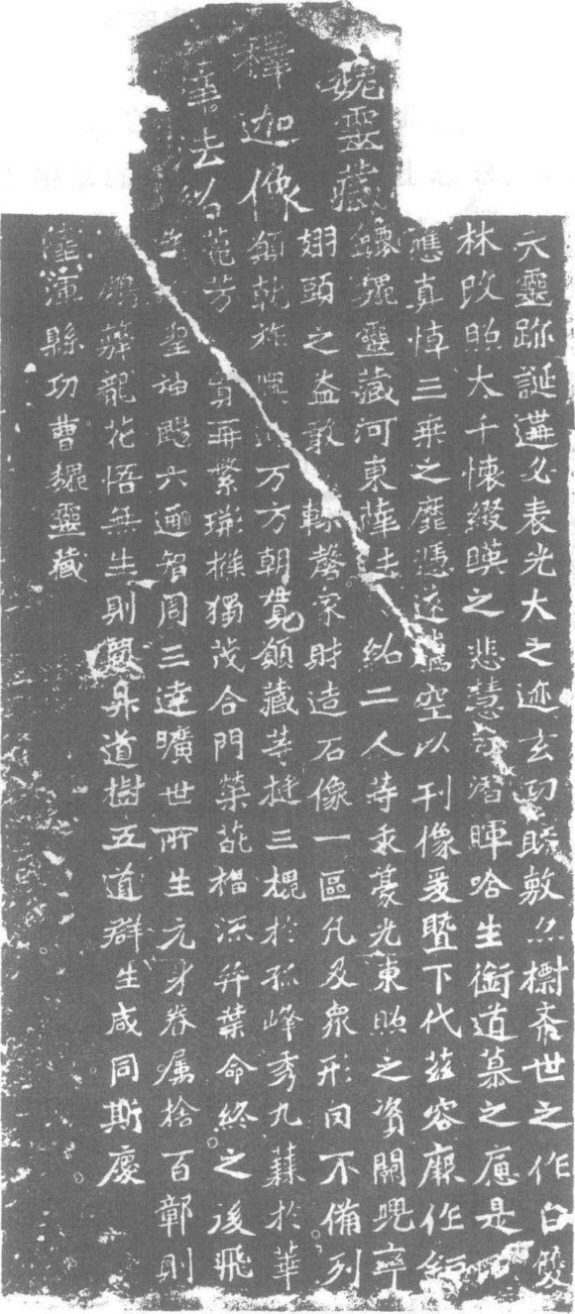Chapter 15 Section 3 regular script
Regular script is also directly born out of official script.It changed the writing method of official script strokes, mainly manifested in the fact that the end of the horizontal pen is no longer raised upwards, but closed; the dotted pen is changed from a long shape to a rounded shape; The hook pen does not need to bend slowly, but becomes a hard hook.More importantly, it changed the Chinese characters from the flat shape of official script to basically square.Later, many people often referred to Chinese characters as "square characters", which refers to regular script.
In terms of physical structure, regular script and official script are similar.Therefore, anyone who knows regular script can generally recognize official script.
Regular script also has other names, called "zhengshu" and "zhenshu".All this shows that regular script is a regular script for people to learn and use.However, these names came only after Kaishu gained the status of regular font.
Early regular script and cursive script are almost indistinguishable, because they are both variants of official script and both come from folk.The Han Dynasty Zhushu brick in Figure 27 can be considered to have more cursive script, and the handwriting on the pottery vase in the first year of Xiping in the Eastern Han Dynasty (AD 172) in Figure 30 has made some changes to the brushwork of Lishu, but The overall effect is relatively neat.Some scholars call it "new slave style".In fact, it may also be regarded as the early regular script, which is a transitional style of official and regular script.

Fig. 30 Inscriptions on pottery vases of the Eastern Han Dynasty
The earliest regular script calligrapher was Zhong Yao [yao Yao, 151-230 AD] in the late Eastern Han Dynasty.His works that have been handed down include "Declaration Table" (Figure 31), "Li Ming Table", "Recommendation Season Direct Table" and so on.Judging from these works, there are still some traces of official script, such as the flat shape of the characters, the wavy strokes of the horizontal strokes, and the upward strokes of the pressing strokes, etc.

Figure 31 Zhong Yao's "Declaration Form" (fragment)
After entering the Jin and Southern and Northern Dynasties, regular script became the main font, but for a long time, it was difficult to completely break away from the taste of official script. For example, the scriptures written by Jin people in Figure 32 still have the style of Zhong Yao.In the Northern Dynasties, most of the inscriptions on cliffs, statues, steles, and epitaphs, mainly in the Northern Wei Dynasty, were written in regular script, but they often deliberately pursued primitive simplicity. Rich, since the late Qing Dynasty, it has been loved by calligraphers, and it is called Weibei style or Wei style (Figure 33, 34).

Figure 32 Jin people writing scriptures
Regular script experienced the above-mentioned long-term changes, and it was not until the Sui and Tang Dynasties that it basically matured.After finalizing the regular script, the strokes and structure are very delicate and rigorous. For example, "Jiucheng Gongli [li Li] Quanming" (Figure 35) by the famous calligrapher Ouyang Xun of the Tang Dynasty (557-641 AD) is a regular script. One of the models, people who learned to write in the past dynasties had to copy it.

Figure 33 Statues of Lingzang in the Northern Wei Dynasty
Printing, one of the four great inventions in ancient my country, uses regular script as the main font for printing.In the engraved books of the Song Dynasty, the regular script was artistically written, and the writing was more regular and beautiful, and it was called "Song style characters".Later, there were some changes that imitated the Song style, which was called "fake Song style".The fonts used in the books and newspapers we read today are roughly the regular script variants of this style.

Figure 34 The Epitaph of Zhang Hei Nv in the Northern Wei Dynasty

Figure 35 Ouyang Xun's "Jiucheng Palace Liquan Inscription" (part)

Fig. 30 Inscriptions on pottery vases of the Eastern Han Dynasty

Figure 31 Zhong Yao's "Declaration Form" (fragment)

Figure 32 Jin people writing scriptures

Figure 33 Statues of Lingzang in the Northern Wei Dynasty

Figure 34 The Epitaph of Zhang Hei Nv in the Northern Wei Dynasty

Figure 35 Ouyang Xun's "Jiucheng Palace Liquan Inscription" (part)
